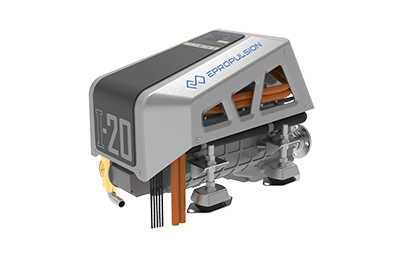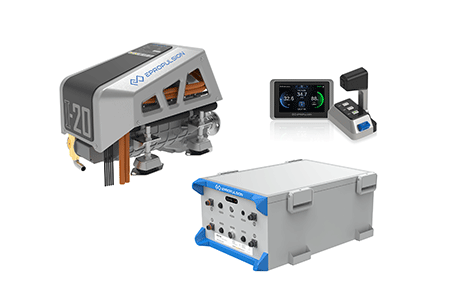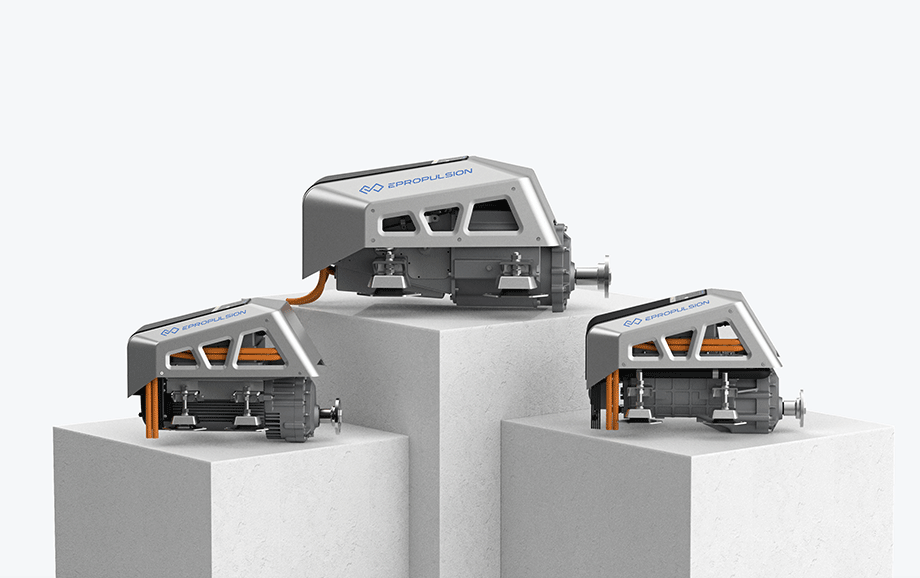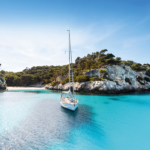Not sure electric is for you? We dispel the myths surrounding electric propulsion.
By 2030 every new car sold in the UK will be electric or hybrid. Marine electric propulsion technology is also progressing fast. Companies like Brittany Ferries are planning hybrid vessels for 2024, demonstrating that this technology is for more than small boats. Like all new technologies electric propulsion has its early adopters, expounding the benefits of cleaner, quieter boating. Yet as with all new innovations, there are often some misconceptions flying about, that cause confusion about what is possible.
What range can marine electric motors provide?
Essentially, your motoring times and distances are up to you. As with a fuel tank, how far you can go is influenced by factors including cruising speed, boat design, hull drag, wind, tide and wave conditions, before you need to refuel or recharge. Electric propulsion systems are configured around your boat type and how you use it, whether for day cruises, long-distance passages or running a passenger ferry. Your battery is your fuel supply; installing more batteries increases your power supply and range.
What size electric motor and batteries do you need?
Whatever power source you use, be it sail, combustion or electric, your boat speed depends on boat type and factors such as hull shape, boat length and weight. Whether you need an inboard or outboard, the size of electric motor and amount of battery power, measured in kW (kilowatts) rather than horsepower, is directly related to your boat design and the type of boating you want to do.
Typically, people often think they need far more power than they will ever actually use. We may believe we do regular channel crossings or long-distance passages, when the reality is occasional day sails on the odd fair-weather weekend. And the auxiliary motor is used simply to get off the mooring or out of the river. The process to establish motor size and power starts with realistically defining the type of voyages you typically make and setting up the electric propulsion system to suit. Additional batteries and charging options are added to increase range, as required.
What size boats are ideal for electric propulsion?

The rapid development in electric propulsion, with more powerful batteries, means it is now a reality for a wide range of monohull and multihull boats, using either off-the-shelf options, custom electric or hybrid systems.
The new ePropulsion I-Series range of inboard motors, for example, is suitable for boats between 15’ to 60’, and are ideal for most leisure sailing yachts.
The H-Series motors will suit boats between 60’ to 100’ with a full displacement of up to 200 tons.
The I-Series motors come in a 10kW, 20kW and 40kW models, effectively replacing the equivalent 20 – 80hp traditional diesel engines. Supplied as plug-and-play units they include the motor, gear box, motor controller, system control unit and cooling system in one compact, easy-to-install box, that can be easily connected to an existing drive shaft.
The high-capacity, lithium (LiFePO4) E-Series batteries are also very efficient, long-lasting and with high DoD cycles (depth of discharge), as well as being recyclable.
Will I run out of power? How will I know?
Adapting to using electric propulsion is not dissimilar to driving an electric car. If you go full throttle everywhere you can expect to run out of power more quickly. Finding the ‘sweet spot’ by decreasing your speed slightly and drawing less amps will significantly increase range and run times.
Most electric propulsion motors come with some form of power usage display. ePropulsion’s smallest outboards have a real-time power and range display. The long-range outboards, POD drives and inboard motor controllers include intelligent data displays. You can see remaining run time, speed and battery levels far more precisely than a fuel tank gauge can ever show. Adjust your speed up or down and you will adjust the run time. The controllers will also alert you when power levels drop below a certain level, such as 30 minutes remaining run time.
If we want to go further how do we recharge?
Just as you plan a trip with sufficient fuel and water, voyages with electric power simply require a different planning approach. How, when and where to plug-in to recharge are similar considerations to planning a marina stop to get fuel.
Adding recharging options increases your power supply on the move too. Wind or solar charging will top-up battery power, and all ePropulsion’s motors allow charging and discharging to occur simultaneously. The Evo motors and I-Series inboards all feature hydrogeneration, enabling recharging using the propeller when sailing at 4kts or more. Realistically, if you only do one or two long-distance passages a year, the alternative to fitting additional batteries is to hire a small, portable generator to provide that ‘safety blanket’ of extra power. And you will probably never use it.
Will all those batteries take up too much room?

The simple answer is no. Removing a traditional diesel engine, fuel tank, cooling system, pipes and cables releases considerable space. Electric motors are generally smaller and lighter too. The ePropulsion I-20 inboard motor uses 60 per cent less space and is 65 per cent lighter than its diesel equivalent.
The compact lithium batteries generally use less space too and can be stacked neatly, freeing up stowage space onboard. With a three times higher energy density and weighing 70 – 80 per cent less than equivalent capacity lead acid batteries, electric systems are usually lighter to install. Reducing overall boat weight increases the electric motor efficiency, with less overall energy required for hull propulsion.
Still unsure about switching to electric propulsion?
As well as the obvious benefits of reducing hydro-carbons in the ocean and your boating carbon footprint, there are many unexpected benefits of switching to electric.
People are always astounded by the lack of noise and engine vibrations. You barely feel when the motor is on, making for peaceful, more comfortable and safer boating, as you can hear each other speak! Electric is excellent for fishing, seal spotting and does not disrupt the bird or ocean life either.
With few moving parts there is little to no maintenance, with no need for servicing or winterising, saving considerable running costs. Inspecting oil levels or coolant systems are a thing of the past, with no fan belts or throttle cables to unexpectedly part company either.
No fuel filters to clean, oil leaks or water contamination to clear up, no pipes rusting into the bilges and no risk of diesel bug to spoil a nice day out.
At the end of the day simply switch off and do not forget to plug in to recharge, if necessary.














